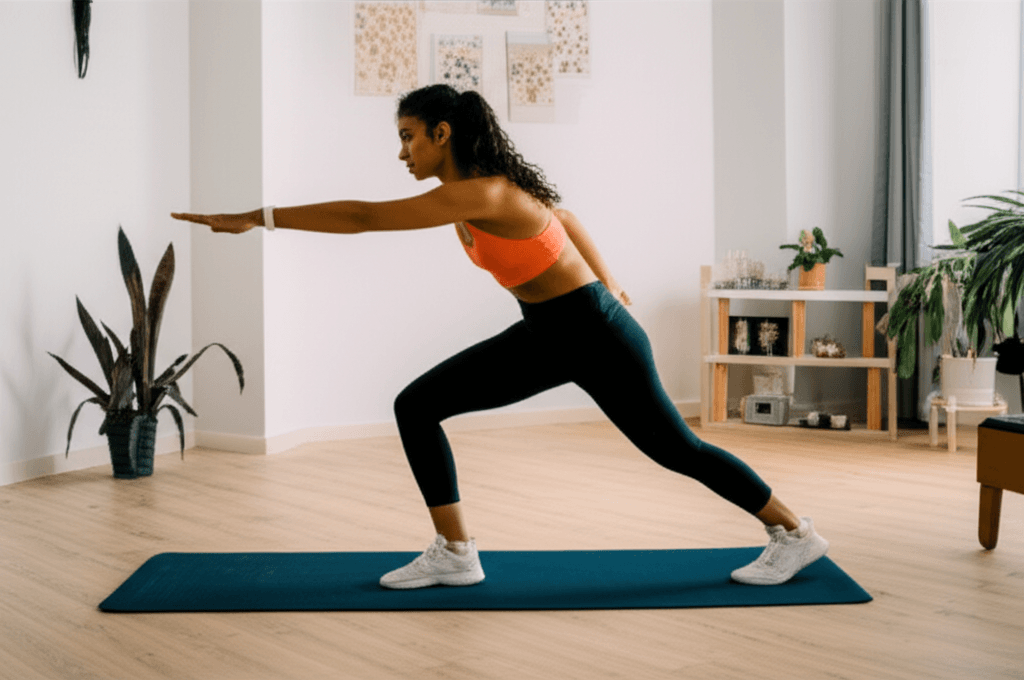For many, the latest viral fitness trend can often seem like a fleeting gimmick, another numerical challenge designed more for social media engagement than genuine results. I admit, when I first encountered the “6-6-6 walking workout,” I was skeptical. Could a routine named so simply, yet with such a distinct structure, truly deliver a meaningful transformation in just two weeks? My doubts quickly dissolved as this consistent, low-impact method not only revitalized my fitness regimen but fundamentally changed my approach to daily movement.
This accessible and effective walking routine has gained significant traction, lauded for its ability to enhance physical and mental well-being without the high intensity of other workouts. It’s a testament to the power of structured consistency, proving that sometimes, the simplest methods yield the most profound results.

Decoding the 6-6-6 Walking Workout: What is It?
The “6-6-6 walking workout” is a structured walking regimen that emphasizes consistency and moderate intensity. While there are slight variations, the core principle is straightforward: it involves a 60-minute brisk walk, bookended by a 6-minute warm-up and a 6-minute cool-down. Many proponents also suggest scheduling these walks around 6 a.m. or 6 p.m., though flexibility in timing is often encouraged to ensure adherence.
This method provides a clear, easy-to-follow framework that removes the guesswork from daily exercise, making it appealing for individuals with busy schedules who want to fit activity into their day. It’s designed to be short and simple, activating your metabolism, promoting heart health, and aiding in weight management, all while being gentle on your joints.

How to Integrate the 6-6-6 into Your Daily Routine
Implementing the 6-6-6 walking workout is less about rigid adherence and more about establishing a sustainable habit. Here’s a breakdown of the steps:
The Warm-Up: Preparing Your Body
Begin with a 6-minute warm-up at a slow, gentle pace. This phase is crucial for gradually increasing your heart rate, loosening your muscles, and preparing your body for the more strenuous activity to follow. You might incorporate gentle arm circles or leg swings during this time.
The Main Event: 60 Minutes of Brisk Walking
After your warm-up, transition into 60 minutes of brisk walking. The key here is “brisk” – you should be able to talk, but feel slightly breathless, indicating you’re working in what’s known as Zone 2 of your heart rate range. For most people, Zone 2 is approximately 50-70% of their maximum heart rate. This pace elevates your heart rate and challenges your cardiovascular system effectively. Whether you choose to walk outdoors or on a treadmill, ensure you maintain a consistent, challenging speed.
The Cool-Down: Aiding Recovery
Conclude your workout with a 6-minute cool-down, slowing your pace back to a gentle stroll. This helps gradually lower your heart rate, aids in recovery, and can prevent muscle stiffness. Light stretching for major muscle groups like hamstrings, calves, and quads after the cool-down can further enhance flexibility and reduce soreness.
Timing and Consistency for Maximum Impact
While the “6 a.m. or 6 p.m.” aspect can serve as a helpful anchor, consistency is paramount. Walking at 6 a.m. can energize you and set a positive tone for the day, while an evening walk at 6 p.m. can aid digestion, reduce stress, and help you decompress. The most important factor is finding a time that seamlessly integrates into your lifestyle, making it easier to stick with the routine daily.

The Science-Backed Benefits of Consistent Brisk Walking
Beyond anecdotal success, the 6-6-6 walking workout is rooted in well-established physiological principles that underscore the benefits of regular, moderate-intensity physical activity.
Cardiovascular Health and Disease Prevention
Regular brisk walking significantly improves cardiovascular health, strengthening your heart and improving blood flow. It’s repeatedly shown to reduce the risk of serious conditions like heart disease, stroke, type 2 diabetes, and certain cancers. Walking in Zone 2 specifically helps condition the heart, lowering blood pressure, blood sugar, and cholesterol levels. The American Heart Association suggests at least 150 minutes of moderate-intensity activity per week, a target easily surpassed by consistent 6-6-6 adherence.
Weight Management and Metabolism Boost
Walking is an excellent, low-impact way to burn calories and contribute to weight loss when combined with a calorie deficit. Walking in Zone 2 encourages your body to burn more fat for fuel. Furthermore, integrating this routine can help activate your metabolism and contribute to maintaining a healthy weight.
Mental Well-being and Cognitive Function
The positive impact of walking extends to mental health. Regular walking can reduce mental health conditions such as anxiety and depression, improve cognition, boost memory, and lower the risk of dementia. Many find walking to be a powerful stress reliever, offering a chance to clear their head and decompress.
Improved Sleep and Energy Levels
Physical activity, particularly moderate exercise like brisk walking, has been shown to significantly improve sleep quality. Walking can help regulate your circadian rhythm and increase melatonin, a sleep-promoting hormone. Additionally, consistent walks can increase energy and stamina, helping you feel more invigorated throughout the day.

My Two-Week Transformation: Beyond the Gimmick
My initial skepticism about the “6-6-6 walking workout” quickly gave way to genuine surprise and satisfaction within just two weeks. Before starting, my exercise routine was sporadic, often falling by the wayside amidst a demanding schedule. I needed something simple, effective, and easy to commit to. The 6-6-6 offered just that.
Establishing Consistency
The structured nature of the 6-6-6 was the game-changer. The designated warm-up, brisk walk, and cool-down made the hour-long commitment feel manageable and less daunting. Choosing a fixed time, for me, 6 p.m., created an unwavering appointment in my day that I quickly came to anticipate. It transformed exercise from an optional activity into a non-negotiable part of my daily rhythm, much like brushing my teeth. This consistency alone was a monumental shift, providing a sense of accomplishment and routine I had been lacking.
Noticeable Physical and Mental Shifts
Within the first few days, I noticed a significant boost in my daily step count, far exceeding my previous averages. By the end of the first week, my energy levels felt noticeably higher, and the afternoon slump that often plagued me began to dissipate. The brisk pace, which felt challenging initially, became more comfortable, allowing me to maintain a steady Zone 2 heart rate with greater ease.
Mentally, the impact was profound. The evening walks became my personal wind-down ritual, a powerful antidote to daily stress. It cleared my head, enhanced my focus for the evening, and, perhaps most importantly, significantly improved my sleep quality. I woke up feeling more rested and ready to tackle the day. While two weeks isn’t enough to see dramatic weight loss, the sense of increased stamina and overall vitality was undeniable. My body felt stronger, my mood was more balanced, and my self-discipline had received a considerable boost. It proved that this wasn’t just another fleeting trend, but a practical and impactful lifestyle adjustment.

Tips for Integrating the 6-6-6 into Your Routine
To make the 6-6-6 walking workout a lasting part of your life, consider these practical tips:
- Gear Up Appropriately: Comfortable, supportive shoes are essential to prevent discomfort and injury. Dress in layers, especially if walking outdoors, to adapt to temperature changes.
- Choose Your Environment: Whether indoors on a treadmill or outdoors on trails, select a convenient and safe location that you enjoy. Varying your route can keep things interesting.
- Leverage Technology: Set an alarm for your chosen walking time to help with consistency. Use a fitness tracker to monitor your pace and heart rate, ensuring you stay in the brisk, Zone 2 intensity.
- Stay Hydrated: Drink water before, during, and after your walk, especially if exercising outdoors.
- Find Your Motivation: Listen to music, podcasts, or audiobooks to make the time fly by. Walking with a friend can provide accountability and make the experience more enjoyable.
- Listen to Your Body: If you’re new to exercise, start slowly and gradually build up to the full 60 minutes. It’s okay to break the 60 minutes into shorter segments if needed, especially at the beginning.
- Consider Post-Meal Walks: Walking after meals can aid digestion and help regulate blood sugar levels.

Who Can Benefit from the 6-6-6 Walking Workout?
The beauty of the 6-6-6 walking workout lies in its broad appeal and accessibility. It’s an excellent option for:
- Beginners to Exercise: The low-impact nature of walking makes it safe and approachable for those just starting their fitness journey.
- Individuals Seeking Consistency: The structured routine helps establish a regular exercise habit, crucial for long-term health.
- Those with Busy Schedules: Its clear time commitment (72 minutes total, including warm-up and cool-down) can be more easily integrated than open-ended workout plans.
- People Looking for Low-Impact Options: It’s gentle on joints, making it suitable for older adults or those with joint pain or limited mobility.
- Anyone Aiming for General Health Improvements: From cardiovascular health to mental well-being, the benefits of brisk walking are extensive and well-documented.
- Individuals Focused on Weight Management: By consistently increasing physical activity, the 6-6-6 can support calorie expenditure and fat burning.
Conclusion: A Sustainable Path to Better Health
The 6-6-6 walking workout transcends being just another fleeting trend; it offers a practical, sustainable, and highly effective path to improved health and well-being. What began for me as a skeptical experiment quickly transformed into a non-negotiable part of my daily life, delivering tangible improvements in energy, mood, and overall fitness within a mere two weeks.
By combining structured movement with the well-documented benefits of brisk walking, this routine provides a powerful tool for anyone looking to reignite their fitness journey or simply enhance their daily vitality. Embrace the simplicity, commit to the consistency, and discover how this seemingly humble workout can lead to a remarkable personal transformation.







